This summer, a team from the University of Exeter have been on field work in the Inner Hebrides tracking and filming basking sharks! Read on to find out why…
Words by Owen Exeter, Christopher Kerry and Jessica Rudd.
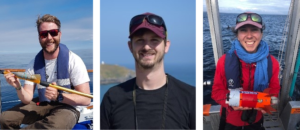
Basking sharks are the world’s second largest fish and one of the UK’s most iconic marine species. Understanding the lives of these endangered fish is key to their conservation. Since 2012, researchers from the University of Exeter led by Dr Matthew Witt and Dr Lucy Hawkes in collaboration with Scottish Natural Heritage’s Dr Suzanne Henderson have been working in the Sea of Hebrides to understand how and why sharks use these coastal waters. This year the team are applying a variety of technologies to investigate the secret life of basking sharks below the surface.
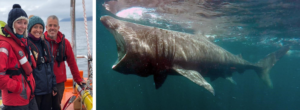
Previously, most of our knowledge of basking shark spatial ecology and behaviour has relied on surface observations limited by daylight and weather conditions. With the recent advances of tracking technologies, we have gained unprecedented insight into their UK distribution, diving behaviour, long distance migration and inter-annual site fidelity. Satellite telemetry data acquired by the Exeter team have confirmed the waters off the Isles of Coll and Tiree as spatially important to the species (Doherty et al. 2017). These findings have directly informed conservation management with the proposed Sea of the Hebrides MPA currently under consultation.
Recently the team’s research has shifted to exploring whether the region has further significance to the species. Little is known about basking shark reproductive behaviour, fine-scale movement or habitat preference. 2017 saw the successful deployment of multichannel tags recording behaviour at the sub-second level (Rudd et al. in prep) and in 2018, custom made cameras designed by MR ROV started elucidating some of these questions. This year we were joined by a team from Woods Hole Oceanographic Institute (WHOI) and their Autonomous Underwater Vehicle (AUV) REMUS, with further towed cameras to deploy and a sonar scanner to attempt to shed further light on the rarely seen secret life of basking sharks.
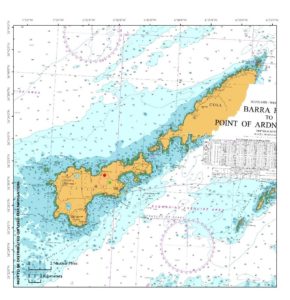
Woods Hole Oceanographic Institute REMUS
REMUS is an AUV, a two-meter-long submersible vehicle that is designed to record underwater footage without manual controls from the surface. This allowed us to conduct long deployments at distances of over 2km from our control boat. Developed by Amy Kukuyla and her team at WHOI, REMUS has previously been deployed to film white sharks, bull sharks and leatherback turtles at depth.
As REMUS relies upon a tracking beacon tag being attached to the sharks half our team set off early from Tobermory harbour to locate and deploy tags aboard vessel Bold Ranger. The control team, including WHOI staff, followed on Etive Explorer. We successfully deployed beacons on multiple sharks across several days. Once tagged, we launched REMUS which followed the sharks at predetermined distances for up to four hours each mission. REMUS has 5 frontal cameras with an optional rear camera allowing near 360 views to be captured and up to 24 hours of footage generated per mission. Members of the team are currently stitching these different camera views together for each mission to allow further processing and analysis of the footage.
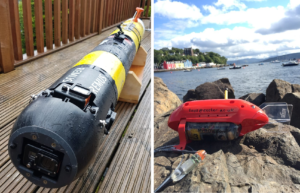
Towed camera deployment
Last summer, the towed cameras revealed new and exciting footage, including the very first shark aggregation observed on the seabed. While basking sharks may aggregate at the surface to feed, it remains unclear why they may do so at depth. Wanting to build upon these initial findings and hope to uncover more novel behaviour, this year we set out to re-deploy three cameras for a longer duration. These tags encase a temperature-depth recorder tracking the shark’s movement throughout the water column while filming it with a rear and front facing camera attached just below the dorsal fin by a 1.5 m tether. A vital component to the tag package is the Programmed Time Release which enables us to set the time at which we wish the camera to pop off the shark after a desired period and an integrated satellite tag, allowing us to track the camera remotely once its antennae breaks the surface by relaying its position every hour.
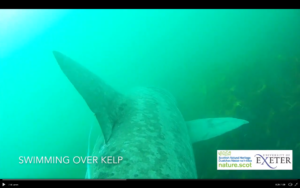
This season the team was again successful in deploying all three camera tags. Upon release we deployed a range of tech to help us successfully hone into the position of the cameras. Once arrived at its last known coordinates, we used a goniometer which gave an idea of the bearing of the camera in relation to the boat. Within a certain range a handheld VHF radio (above the surface) as well as a VEMCO acoustic pinger (underwater) provide extra confidence in the directionality and distance to our prized tags.
While two of the sharks remained close to Coll, the third shark swum towards the Isle of Harris in the Outer Hebrides, nearly 150km north of it’s initial attachment. After a stroke of luck, a skipper and boat were found to help locate the last tag, known as Mr ROV Green, but required us to leave Mull, cross the mainland and drive across Skye before being picked up by a rib to find the camera. With the final mission successfully completed and all three camera tags found, now comes the exciting part of reviewing footage from both the cameras and REMUS to discover what new behaviours may have been recorded, along with answering biologically important questions such as estimating feeding rates and tail beat frequencies, as well as possible interactions with other basking sharks.
Finally, we would like to say a big thank you to Matt, Lucy and Suz for their knowledge and support during this field season. Interacting with a range of field technologies and seeing our data feed directly into policy and management is an invaluable experience for early career researchers. This work wouldn’t be possible without their hard work and dedication. We would also like to extend our thanks to Sky Ocean Rescue, WWF and Scottish Natural Heritage for their support of the project.
If you would like to updates on the basking shark project and our team’s other research please follow via twitter: Owen @OExeter, Chris @chriskerry1989 and Jess @jlrudd.
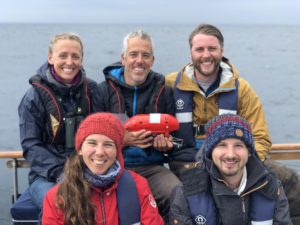
#ExeterMarine is an interdisciplinary group of marine related researchers with capabilities across the scientific, biological, medical, engineering, humanities and social science fields.
Find us on: Facebook : Twitter : Instagram : LinkedIn
If you are interested in working with our researchers or students, contact Michael Hanley or visit our website!
